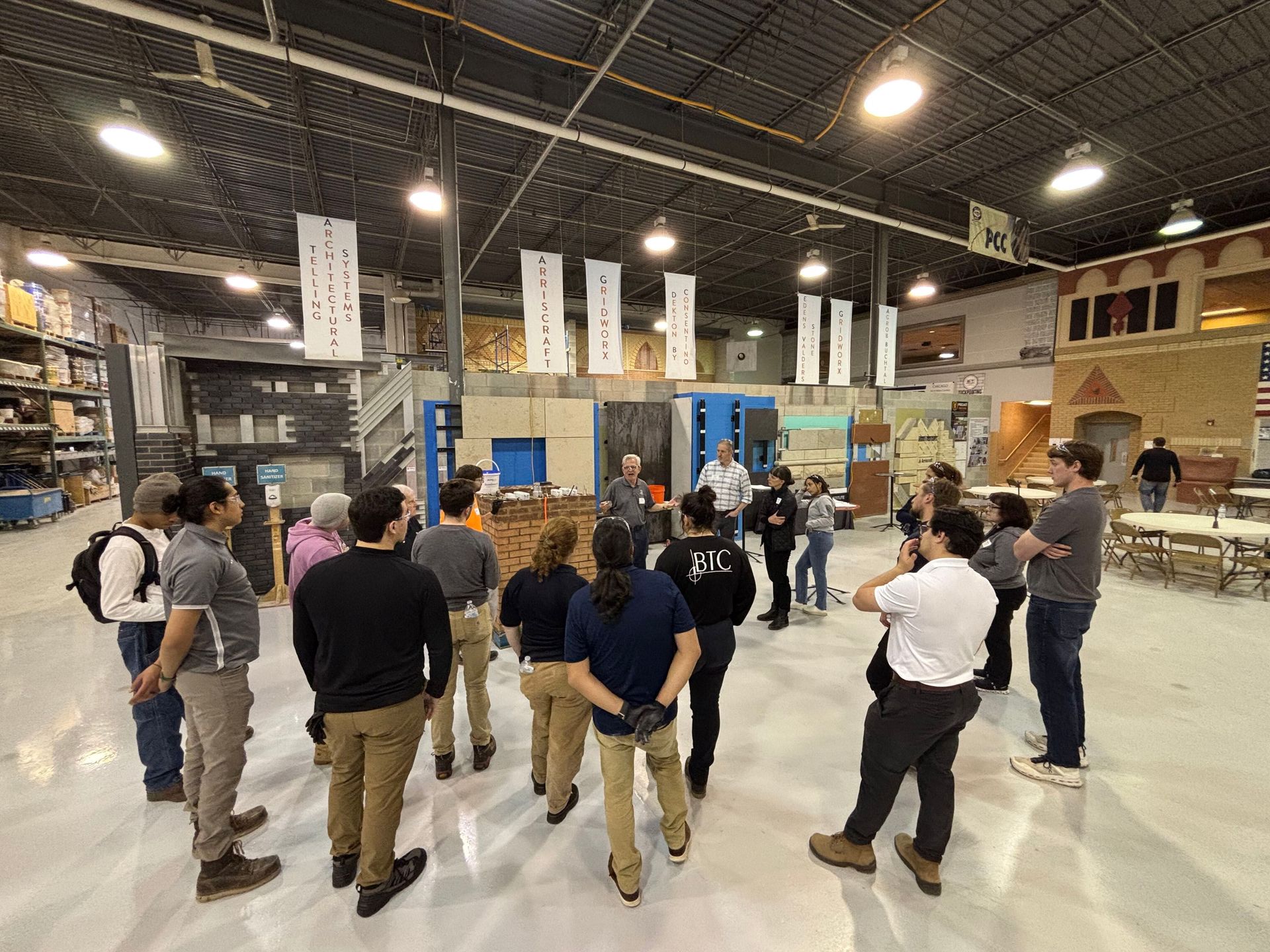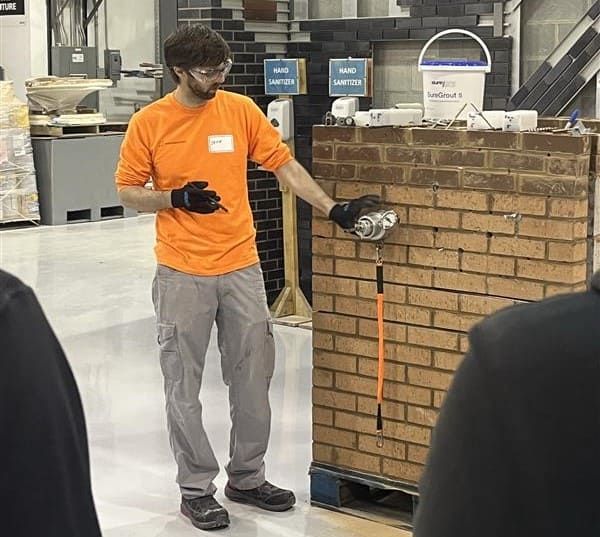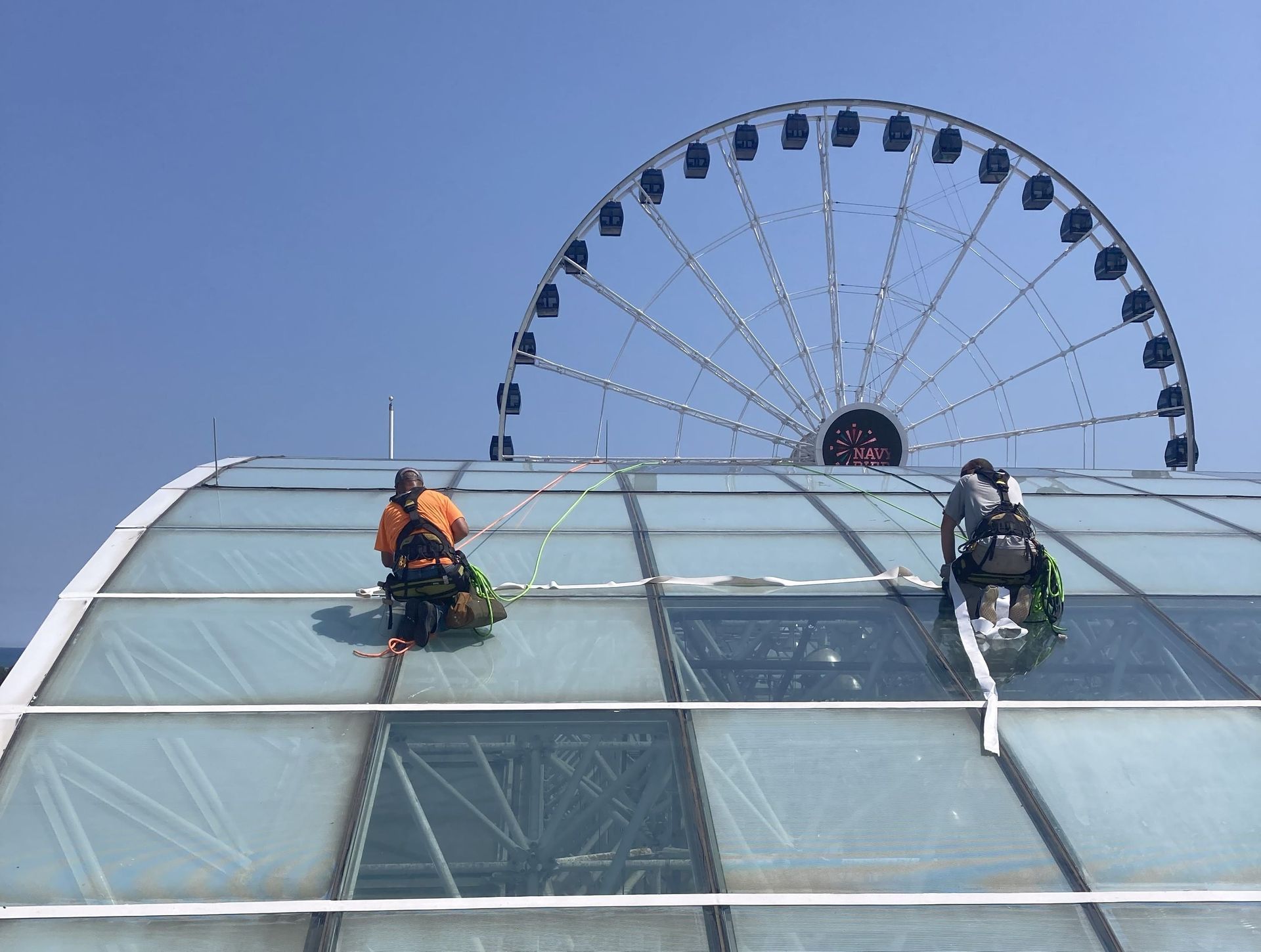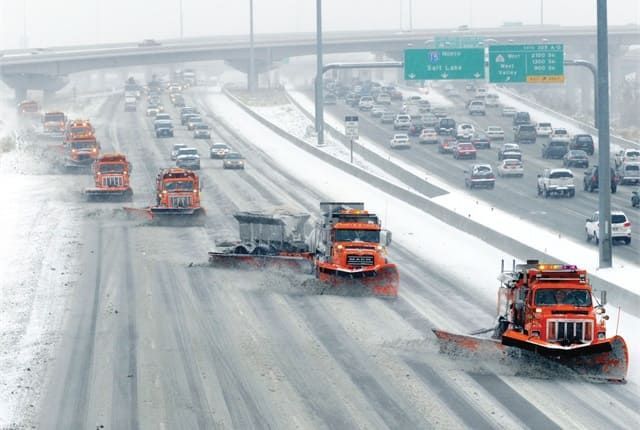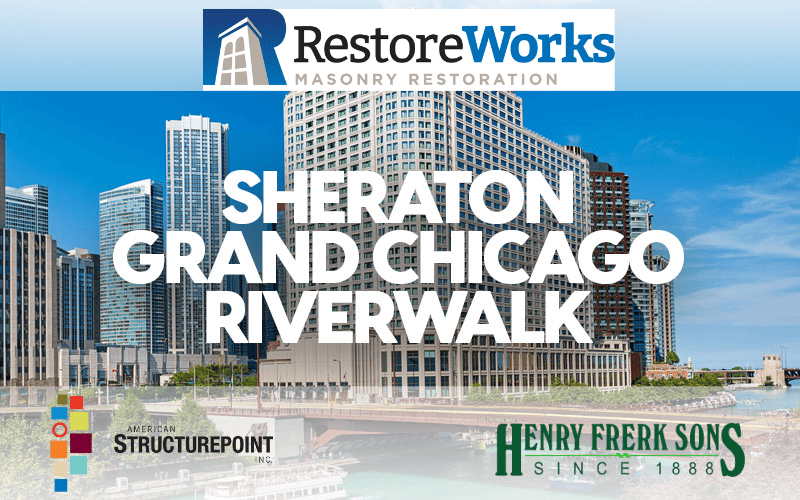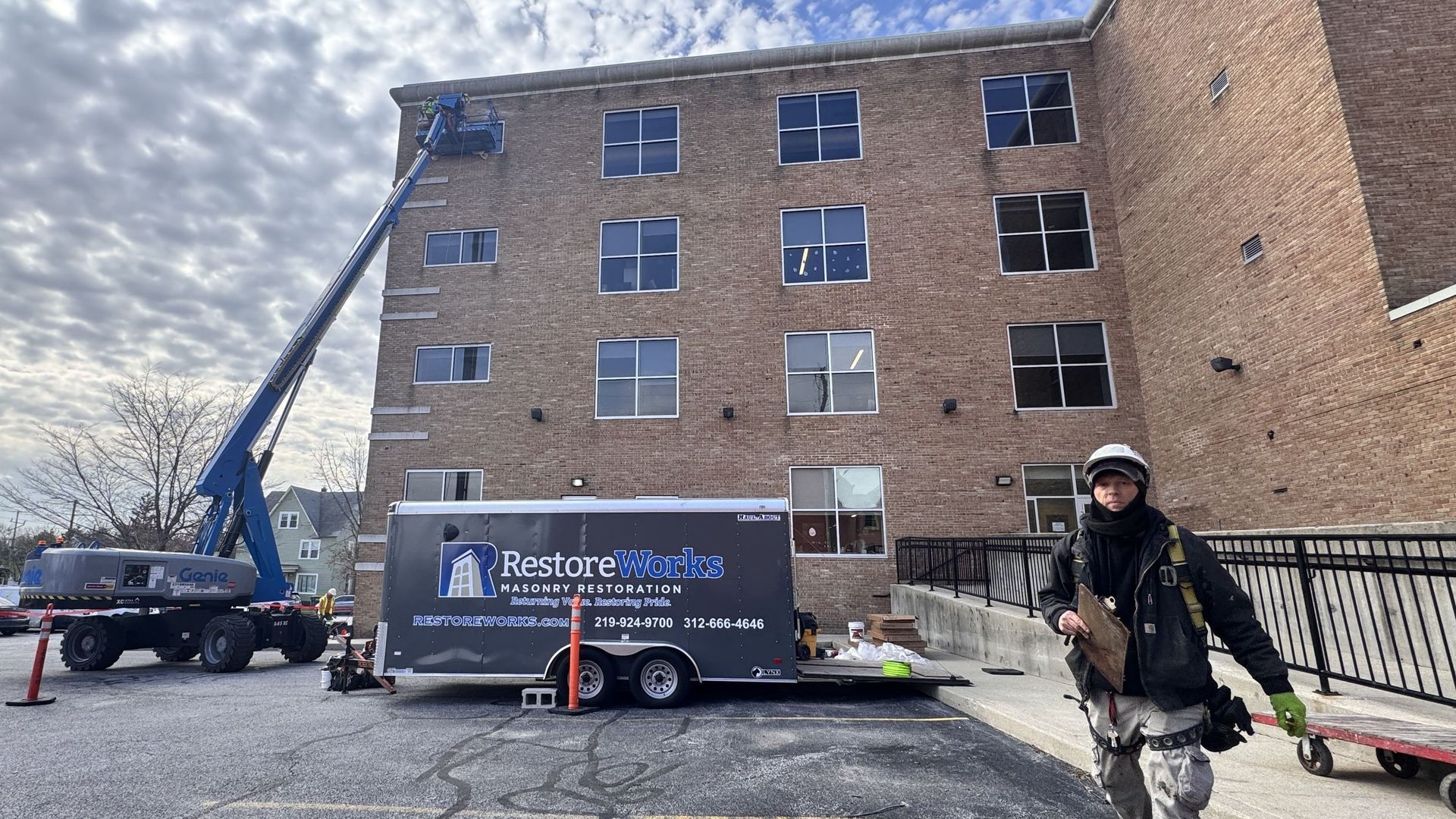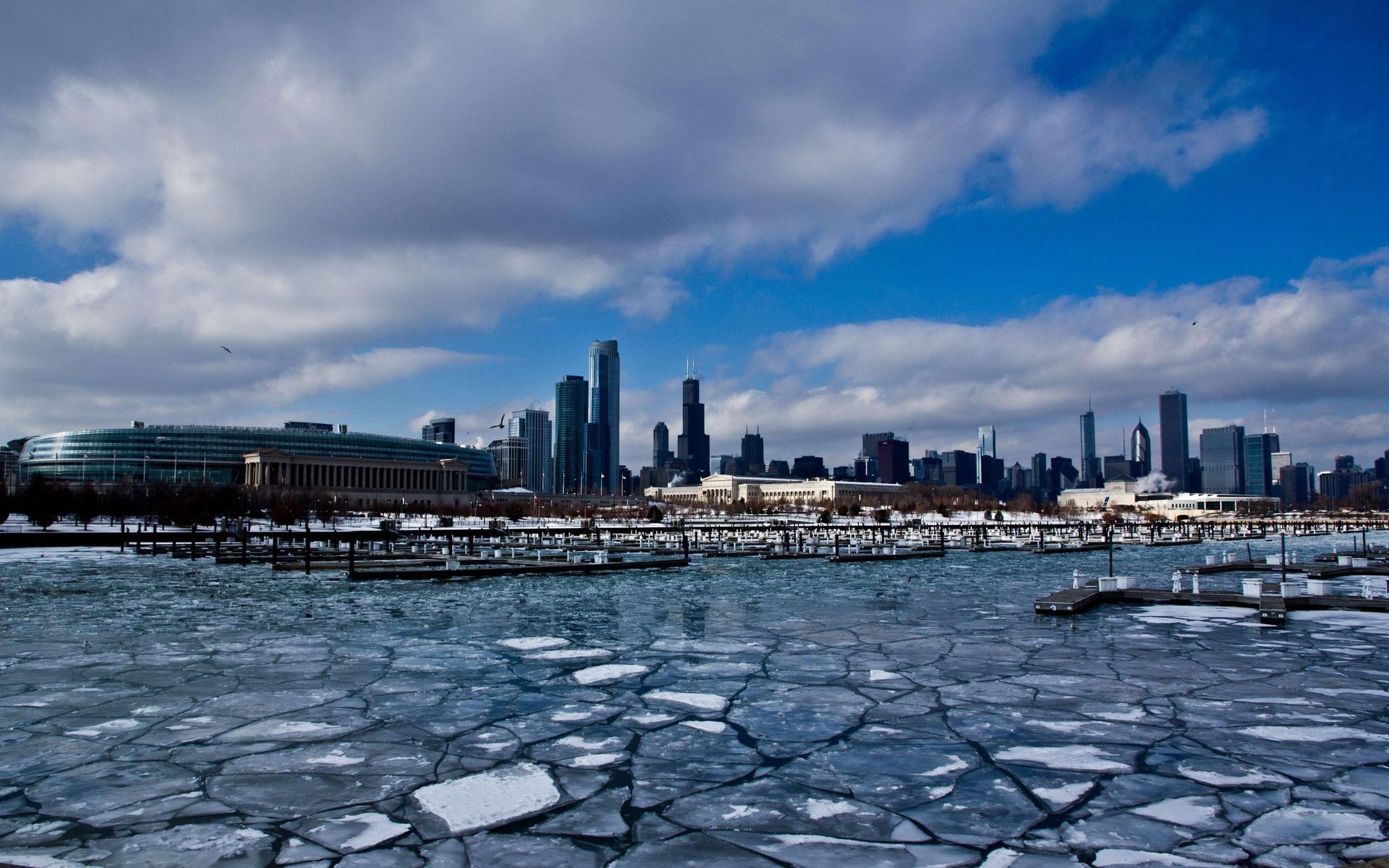When buildings show signs of structural distress (cracks in masonry walls, bowing façades, or settlement), restoration often starts behind the scenes, not just at the surface. Anchoring, stabilization, stitching, and beaming are critical techniques used by skilled masonry restoration contractors to discreetly restore integrity and ensure the long-term performance of aging buildings.
At a recent hands-on workshop hosted by RestoreWorks in collaboration with the International Masonry Institute (IMI) in Addison, Illinois, attendees including engineers, architects, and project managers participated in live demonstrations of these essential structural repair methods. Here's what your team should know.
Why Structural Stabilization Matters in Masonry Restoration
Older masonry buildings, especially those constructed before modern reinforcement standards, often rely solely on the mass and interlocking of masonry units for strength. Over time, water infiltration, foundation movement, or material fatigue can lead to displacement and cracking. Left unaddressed, this can lead to safety risks, performance issues, or even partial collapse.
According to the Masonry Advisory Council, proper reinforcement and stabilization methods can significantly extend the lifespan of masonry structures and improve resilience in Chicago's freeze-thaw climate. But solutions must be tailored, as not all cracks, cavities, or bulges are treated the same.
A Closer Look at Anchoring Systems
One of the most important elements of stabilization is anchoring. Anchors are used to secure masonry back to structural substrates or to tie wythes together. At the workshop, attendees learned about various anchor types and material considerations, including:
- Helical anchors for tying masonry wythes in multi-wythe construction
- Mechanical expansion anchors and epoxy-set anchors for retrofits
- Corrosion-resistant materials, such as stainless steel, for long-term durability
During demonstrations, IMI instructors emphasized the importance of proper embedment depth and load testing. According to the Brick Industry Association, proper installation of retrofit anchors is crucial for enhancing the stability of masonry structures and minimizing the risk of face cracking.
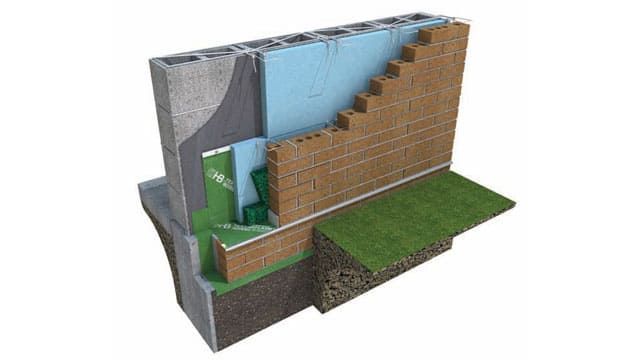
Spiral Tie Installation & Pull Testing: Quality Assurance in Action
One hands-on activity that sparked strong engagement was spiral tie installation. This technique is often used in cavity wall repairs and wythes that have become delaminated over time.
Participants practiced:
- Drilling through outer wythes at a prescribed angle
- Inserting spiral ties with adhesive or grout
- Conducting pull tests to verify bond strength and anchorage
Pull testing provides data to confirm that ties meet minimum load requirements, and it’s increasingly requested by structural engineers on historic or critical façades.
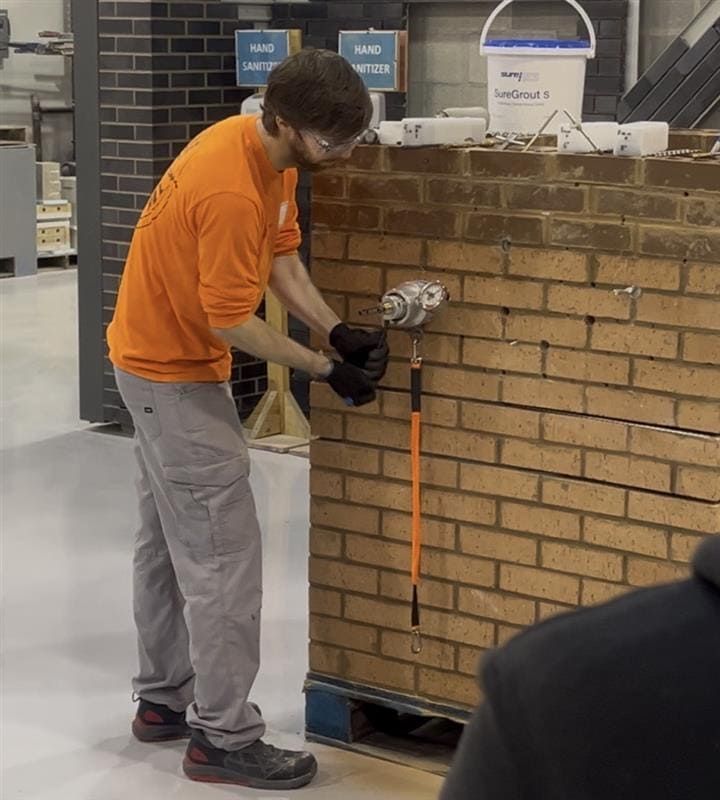
Crack Stitching: Discreet Structural Repair
For masonry walls showing stepped or vertical cracking, crack stitching offers a non-disruptive reinforcement option. At the workshop, IMI specialists demonstrated how stainless steel helical bars are embedded across cracks, bedded in grout or epoxy, and concealed within repointed mortar joints.
Crack stitching is ideal for:
- Stabilizing stress-induced cracking without dismantling the wall
- Reinforcing weak points without altering historic appearance
- Preventing further movement across the joint
Crack stitching is recognized as a discreet and effective long-term solution for stabilizing cracked masonry. According to PROSOCO, this method not only addresses structural concerns but also helps preserve the visual character of historic and commercial façades, making it an ideal technique for sensitive restoration projects.
Helical Beaming: Spanning and Redistributing Loads
One of the more advanced techniques demonstrated was helical beaming, which provides horizontal reinforcement across openings or in weakened wall sections. This method uses pairs of helical bars installed in high-strength grout to form a concealed beam within the masonry.
Applications include:
- Redistributing loads around failed lintels or corroded steel
- Reinforcing weakened parapets or spandrels
- Stabilizing openings where traditional lintel replacement is impractical

Takeaways for Property Stakeholders
Whether you're managing a multifamily property in Evanston, working on a commercial building retrofit in downtown Chicago, or specifying repairs for a historic structure in Oak Park, understanding these stabilization techniques can help inform your approach.
Benefits of these methods include:
- Minimally invasive structural repair
- Reduced need for demolition or replacement
- Improved long-term performance and code compliance
- Preservation of architectural character
Partnering with a Qualified Masonry Restoration Contractor
At RestoreWorks, we believe education is the foundation of smart preservation. That’s why we invest in hands-on learning and technical partnerships with organizations like the International Masonry Institute. Our team has successfully executed anchoring and stabilization projects across the Chicago region, from structural reinforcement of terra cotta façades to spiral tie installations in aging brick apartment complexes.
If you’re seeing signs of structural movement in your building or want to proactively assess stability, contact us to schedule a site visit or consultation.
